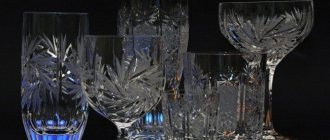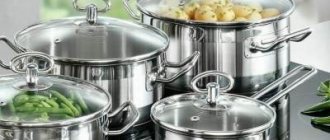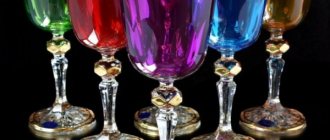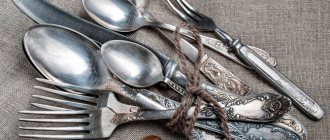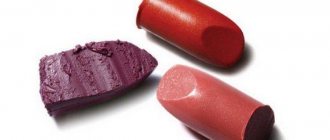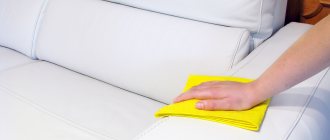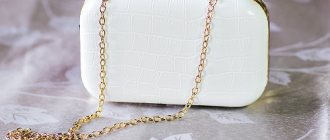In this article we will talk about how to clean crystal at home until it shines, and we will give advice on choosing products depending on the nature of the glass contamination.
A beautiful set of fine crystal glassware can become the crown jewel of your dinnerware collection - if cared for properly
Crystal dishes have always attracted attention with their elegance and beauty. Its melodic sound delights the ear, and the radiance of the play of colors delights the eye. But if not properly cared for, the product may lose its original shine, acquire a patina, yellowness and cease to please the owner. Caring for crystal objects is quite simple and will not take much of your time.
Types of crystal
For the manufacture of glasses, chandeliers, vases and other products, as a rule, three main types of crystal :
- Lead - the classic version containing lead oxide. Most often used in the manufacture of household products.
- Barium - products of this type contain barium instead of lead.
- Bohemian - differs from other products in containing not lead and barium, but potassium-calcium glass.
The above varieties have different manufacturing technologies. There is also rock crystal , a natural and expensive material used to make jewelry. You can only find dishes made from it in a museum. Requires the most careful treatment and gentle cleaning.
Having understood what types of crystal there are, we can move directly to cleaning methods.
Crystal tableware can decorate any table
Saline solution
Cloudiness of the transparent walls of the dishes negatively affects the appearance of the products. You can get rid of unwanted dullness using regular table salt. The wet walls of the dishes are carefully wiped with finely ground salt. There is a risk of damaging the surface during this type of cleaning, so you should proceed with extreme caution.
To avoid possible scratches, you can prepare a saline solution, which will also perfectly clean the crystal and be more gentle. The product is prepared based on:
- 0.5 tablespoon of salt;
- 1 liter of water.
The product must be placed in the liquid and kept in it for 20 minutes. If the pollution is strong, the time is extended to an hour. After such a bath, the dishes are rinsed with running water and wiped dry.
Basic rules for caring for crystal glass
There are several simple care rules that must be followed regardless of the type of crystal:
- It is recommended to wash crystal products in a plastic basin or bowl, having previously covered the bottom with a cotton cloth. This way you will protect yourself from the consequences of objects accidentally slipping out.
- Products should not be washed in cold or hot water to avoid turbidity. You should avoid sudden changes in temperature - this can cause cracks to appear on your favorite glass or vase. Remember that the most suitable temperature for washing is around +35 ℃.
- No powders or other abrasives are used for cleaning! Such substances, although they will clean off dirt, will leave behind scratches and abrasions. For effective and gentle washing, we recommend using either special solutions for cleaning crystal products or traditional dishwashing detergent.
- After washing, be sure to rinse the products with plenty of running water to completely remove any remaining dirt and detergents.
- To avoid the appearance of streaks and cloudy spots on the glass, it is not recommended to leave crystal objects to dry on their own. Rinse the product thoroughly with water, then wipe dry using paper towels, microfiber cloths, or pieces of lint-free cloth.
To prevent fingerprints from remaining on the crystal, we recommend rubbing it with cotton or rubber gloves.
In the dishwasher
You can clean your crystal items in the dishwasher. A number of conditions must be met:
- The dishwasher must have a special mode in which there will be no temperature changes. If you use other programs, the crystal may become cloudy. A delicate mode is suitable, and if this is not the case, then choose the shortest time or just rinse.
- The optimal water temperature is 40 degrees.
- Use only special “3 in 1” dishwasher tablets, gels without alkalis or acids in the composition. Do not use products intended for hand washing.
- A crystal item containing barium can be cleaned in the dishwasher. If the item contains lead, it is best to wash it by hand. The composition of the crystal can be studied on the packaging if the item is not too old and the box has been preserved.
- Do not put gold-plated items in the dishwasher.
Types of contaminants and methods for eliminating them
Depending on the purpose of the product, the types of contaminants and methods for removing them usually differ. Let's look at the main ones.
White deposits from stagnant hard water
We think that almost every housewife has encountered a similar phenomenon. They give you a bouquet of flowers, you put it in an elegant crystal vase and admire it. And over time, you discover an unpleasant whitish coating at the bottom of your favorite vase. How should such contamination be washed away?
It is necessary to prepare an acidic solution based on any of these acids:
- citric (lemon juice/citric acid);
- acetic (vinegar, any percentage);
- oxalic (technical).
The proportion for preparing the solution is simple: take 1 tbsp for 1 liter of water. l. table vinegar or lemon juice or 2-3 tbsp. l. oxalic or citric acid powder.
Pour this composition into the container in which you plan to wash the product and begin cleaning. It is better to carry out treatment with washcloths and brushes of medium hardness.
What to do if it was not possible to remove the plaque the first time? We recommend pouring some vinegar or lemon juice into the vase and leaving it for several hours. Next, you need to pour some coarse grains (for example, rice or peas) inside the vase. Then you need to cover the neck of the vase and shake it properly. The grain will break up and can be easily removed from the surface of the vase. After completing the procedure, do not forget to thoroughly rinse off the detergent composition with running water.
If you do not have any of the above acids in your home, we recommend another method. Boil a few potatoes as usual. Remove the tubers and let the “potato water” cool completely. Then immerse the dishes in this liquid for 10-15 minutes, then rinse the items under running water using a soft sponge.
Green coating on the bottom of products
This situation can be encountered if the water in the vase with the bouquet was not changed in time, as a result of which it “bloomed”. What help can a crystal container provide in this case?
soda will come to our aid . It is necessary to pour a small amount of alkali inside, then add a little water. After this, you need to vigorously shake the vase for about 1 minute. Remains of plaque and soda should be washed off with a slightly acidic bite solution.
Please note that this method is also suitable for removing stains from wine or juice on the bottom and walls of glasses.
Fatty coating
Such stains can most often be found on crystal products with a large number of openwork carved elements. Old crystal can also be covered with a layer of greasy dust.
Grease easily penetrates the grooves of the thread and remains there for a long time. In order for crystal dishes to continue to delight the eyes of the hostess and guests with a dazzling shine, we recommend using the following method. You will need glass cleaner and a clean cloth . Soak the material in the composition and wrap the crystal product for several hours. After time has passed, unwrap the dishes and remove the soaked residue with a sponge or soft brush.
Acid for cleaning products can be replaced with Coca-Cola. It is enough just to pour a small amount of the drink inside a vase or glass and leave for a couple of hours, and then rinse off as usual.
White deposits on the bottom of crystal vases are common. You can remove it with vinegar or citric acid.
Removing greasy stains
They usually appear on carvings when a greasy substance gets stuck on the surface of the designs. And also on old crystal dishes, covered with a heavy layer of dust.
To remove grease, you will need a glass cleaner and a soft cloth. Soak the fabric in the liquid and wrap the product for a couple of hours. The plaque will become wet and can be easily removed with a sponge.
How to make a crystal product sparkle and shine
The crystal is washed, there is no plaque or visible traces of dirt. But how can you make your favorite vase sparkle again, and the edges of the glass shine with a diamond shine?
There is nothing complicated here either. We recommend that you choose one of the following:
- Alcohol . Wet a cloth with alcohol and thoroughly wipe the product inside and out. Wait until completely dry.
- Vinegar . In a glass of clean water, dilute 2 tbsp. l. vinegar. Leave the product in the resulting solution for a while, then wipe dry with a rag.
- Ammonia . Mix ammonia solution with water in a ratio of 1:3. Dip crystal items into the resulting mixture, then dry the items with a napkin.
Crystal glass products can have a practical or decorative function, but in both cases the items require proper and regular care
Quality mark
No matter what crystal the vase is made from, it still needs to be properly cared for. The highest quality and unimaginably beautiful products are made from Czech crystal. It has a high light dispersion coefficient and looks great. Previously, there was a real hunt for these products. Women stormed stores in search of an unusual flowerpot.
This crystal flower vase proudly decorates any room in a classic style. Rococo and Baroque also cannot do without such a radiant companion.
How to wash a crystal chandelier
It is no coincidence that we are considering this topic in a separate section, since it is not always possible to remove individual elements of the chandelier and wash them using one of the methods listed above.
To properly clean the chandelier, you can dry clean it using an antistatic brush.
special products on sale for effectively cleaning crystal glass chandeliers; finding them in the hardware department is not difficult. However, they can easily be replaced with a regular solution of ammonia and water in a ratio of 1:3 . To clean using this method, we recommend placing rags on the floor onto which excess product will drain.
To enhance the shine of the product, we recommend that after cleaning the chandelier from dirt, treat the glass elements with a solution of table vinegar in a ratio of 2 tbsp. l. a glass of water and wipe dry.
Clean your chandelier regularly using one of the methods listed above, and your artificial sun will delight you with its radiance and shimmer for a long time.
Caring for a crystal chandelier is not at all difficult. And as a result, its luxurious radiance will be worth all your efforts.
From this article you learned how to effectively clean your crystal products from plaque and other contaminants. As you can see, this requires very little physical effort and financial costs.
Perhaps in modern life, crystal products are not as popular as they used to be, but, undoubtedly, any bouquet will look more impressive and elegant in a crystal vase, and crystal dishes displayed on a festive table will add a festive touch to your meal. Use your favorite devices with pleasure and make yourself and your loved ones happy!
Variety of shapes
Today's glassblowers create unimaginable things from crystal. If previously only a few dozen versions of vases were made, now their number has exceeded thousands. The crystal vase has been transformed and appears in the form of amphoras, narrow flasks, spacious “basins”, jugs and bottles, outlines of animals and people. Various cuts and engravings allow you to create real works of art. Vases are painted with special paints and metallic coating is applied. Just as before, such products are considered signs of prosperity and good taste.
